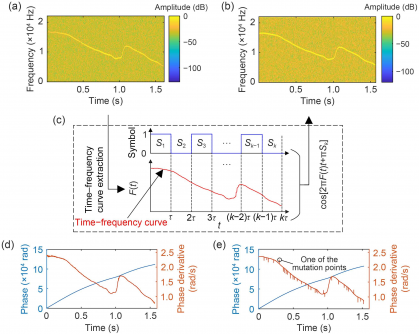URGENT UPDATE: A groundbreaking method for recognizing underwater communication signals that mimic dolphin whistles has just been unveiled by researchers from Tianjin University and the Shenyang Institute of Automation, part of the Chinese Academy of Sciences. This innovative technique, reported on July 15, 2023, promises to revolutionize maritime communication, particularly in military operations where stealth is paramount.
Traditional methods for detecting underwater signals have struggled against advanced camouflage techniques, making them vulnerable to interception. The newly developed approach utilizes a convolutional neural network (CNN) to enhance recognition accuracy, achieving a remarkable 90% accuracy rate under challenging conditions, including high noise environments.
The research centers around the concept of underwater bionic camouflage covert communication (UBCCC), which utilizes signals modeled after natural dolphin calls. These signals are intricately designed to evade traditional detection methods, often leading to misclassification as background noise. The urgency for a solution is clear, as modern military confrontations increasingly rely on such covert technologies.
Researchers implemented a three-step process to achieve this advanced recognition. First, they employed Spatial Diversity Combining (SDC) to consolidate data from multiple hydrophones, effectively reducing multipath interference. This foundational step is crucial for clear signal extraction.
Next, the team introduced Time-Frequency Spectrum (TFS) Mask Filtering to isolate the dolphin-like whistles from the surrounding noise. By transforming the TFS into a 2D image, they could effectively filter and segment the signals, leading to the creation of a TFS mask that accurately extracts the desired acoustic signals.
Finally, the recognition process utilizes the Phase Derivative Spectrum in conjunction with the CNN. The researchers applied the Hilbert transform to extract the phase of the whistle signal, leading to the generation of a scalogram image. This image serves as input for the CNN, which was fine-tuned using the GoogLeNet architecture and a cross-entropy loss function, allowing for precise identification of the signals.
Field tests conducted at Qingnian Lake in Tianjin confirmed the method’s reliability, with an 81% accuracy rate achieved over a distance of 150 meters and with a signal-to-noise ratio of 6.36 dB. While slightly lower than simulation results, this figure still highlights the method’s effectiveness in real-world underwater conditions.
The implications of this research extend beyond military applications, potentially benefiting oceanographic studies and environmental monitoring where accurate communication in noisy aquatic environments is crucial. As researchers continue to refine these techniques, the potential for improved underwater communication systems looks promising.
Stay tuned for more updates on this developing story and the future of underwater communication technology. For further details, the full paper titled “Recognition method for underwater communication signals that mimic dolphin whistles using phase-shifting modulation” can be accessed at https://doi.org/10.1631/FITEE.2400572.
This innovative technology could redefine how we communicate underwater, making it more efficient and secure.







